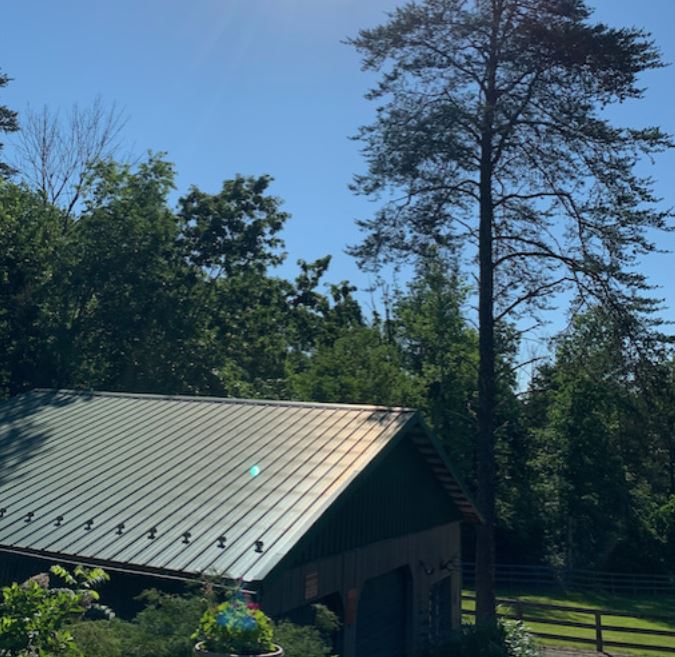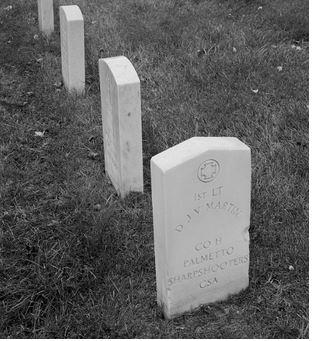Ceiling and Visibility Unrestricted

A glorious Piedmont day out there, two in a row! There is not quite the same unbridled joy in the gentle caress of a warming waft of air under the limitless blue of the sky and the golden radiance of our solar disc whose welcome rays slowly illuminated the south end of the bunk house, gently nudging the dark away.
The general mood for those who roused early was buoyant. Not quite as effervescent as yesterday’s, since ‘perfection’ had been achieved and there was challenge in the air to accomplish something in a morning that beckons for accomplishment. Marlow wrote a powerful one about the fire that is coming, and it jarred with the mood. It would be easier to settle into some hard times with a gray sky, and that is not the sense under a CAVU horizon- “Ceiling and Visibility Unrestricted.” Ours is so declarative in brilliance that sharp tangs of bright white radiate in spikes from the intensity of the solar mass. The glance down into the steaming dark coffee in the mug reveals the contrast of human labor to the majesty of nature.
There was some talk about being alarmed at the Climate. No one objected to the 25 degrees the temperature is to increase today, nor did any of the other species on The Farm. There was a corresponding inclination not to simply bask in the beauty, but to accomplish something within its confines. There was a motion to borrow the truck and drive to town and utilize some Gorilla Glue to paste ourselves to something in protest, but what we would be protesting was an unresolved issue and was voted down to general laughter. There was other stuff to talk about, two projects that emerged from the Chairman’s in-basket.
As you know, our County (well, an adopted one for all of us) was once the scene of hardship. It was the time of the great conflict between the states. It is well-documented with accounts of the men and their units that clashed here in armed conflict. They also spent two winters camped in preparation for more conflict on the highlands above our fields. The histories usually culminate in the final act at Appomattox, and fast-forward ahead to accounts of transcontinental railroads, Robber Barons and wars with Spain. By contrast, this crossroads County tried to emerge from chaos and it moved at the slow pace of our greenery.
A visit to our National Cemetery on the occasion of Memorial Day had sparked the conversation that aroused the Chairman’s interest. The Cemetery is a place of precise placement of uniform white stones. It holds a solemnity for the sacrifice of those who rest there. It was created to provide a sense of honor not for those who fell, but for the families who gave them up. They say nearly half of the Union troops who fell were categorized as “unknown,” and is one of the reasons the Army became very precise about such matters.
There was a massive effort by Washington to tidy things up when the fighting was done. That involved a grim bit of effort, involving large crews of workers to disinter the fallen from the soil that accepted them in the days that followed their departure, the respectful transport and orderly placement in ground more suitable to recognize their sacrifice.
We periodically re-fight some of the battles that took them. A major speedway was proposed years ago for the junction and rail stop at Brandy Station. It would have leveled and paved some of the terrain and dawn crowds of tens of thousands to gather and cheer in a place where the same number of people gathered for something else. It was an emotional conflict and within living memory under skies both clear and clouded.
The note about our National Cemetery that had struck the Chairman was scrawled on the margins of the printed note that found it’s way from his outbasket to the one that greets DeMille each morning under a variety of skies. “How come there is only one Confederate buried there?”
Therein lies another tale. Our group follows the local writers at the Clarion-Bugle. It is a digital following these days, since the walk up to the mail-box on the County Road to retrieve the snail-mail or the paper involves a certain expeditionary quality we have largely abandoned. A question to the paper, sent electronically, revealed a partial answer:
“A fellow whose name was Dever Martin is the only Rebel in the field.” The note included an attachment with a black-and-white image of a pale stone against gray grass. It is a curious image, since it is the only stone not laid with precision in the neat rows.

You can see it as an act by someone about something. The stone itself is unlike those of the Union fallen. Their stones feature a gentle curve at the top. Dever Martin’s features a gentle peak, and the alignment is crossways to the neat gentle rows of stone.
That matter aroused some more than gentle speculation. “So, what about all the other soldiers? There must have been thousands of them buried around here, right?”
Considering the beauty and peace of the morning, there was no inclination to rush back to the computer closer to the antenna in the Big House to do the research. There must be something there about how the residents of our County supported the construction of the Cemetery, the work crews at Cedar Mountain and Brandy Station, all laboring in places where more than a hundred thousand armed men camped two winters, burning fences for fuel and plundering available stocks of food. And hundreds of graves left in the fields where they were lain in the haste of war.
“The Chairman was complaining about how fast the foliage grows back here. He kept the pastures clear, but all the other stuff just grew up around the fences and barn and the bunkhouse. He said it was remarkable what just a few years of growth can do to overwhelm things.”
“The lady from the Paper noted there is a plot at the Fairview Cemetery for the Confederates. They dug them up in 1880 for a mass grave. Things must have been pretty much grown over or back under the plow by then.”
“And they probably missed a few because of it. That is why some of these fields are sacred to someone and we aren’t sure which ones.”
“They are ‘hallowed’ to all of us,” said Splash, who had been poking at his tablet, channeled through his phone to a satellite in low-earth orbit to one of the new data centers they are building on the same fields just east of Mount Pony. “Dever died in command of Company H of the Palmetto Sharpshooters. He had relieved his brother, who was killed a couple months before.”
“Where is he buried?” asked Melissa, who was more inclined to look at the sprigs of fresh basil coming up from one of the planters. Splash shrugged. “Dunno.”
There was an inclination for those at the Fire Ring to lean back a little and absorb Vitamin D from the skies above. Splash was a cup of caffein ahead. He rose with his cup dangling from his index finger. “It would be interesting to find out what happened in the years between when they were digging up the two sides, and what changed.”
“And changed again,” said DeMille. “There were eighty Confederate graves found over in Lynchburg in 2015. It had been a cemetery for both sides, but the Union bodies were dug up in 1866 for formal burial. They left the Confederates unmarked for more than a hundred and fifty years.”
“The Chairman is curious about it. His family had Irish kin who wound up on both sides. But our attorney Amanda says we should stay away from unresolved conflicts.”
“That means we are supposed to stay away from pretty much everything. What are we going to run today?”
“Marlow seems to have that wrapped up already. His piece is called ‘The Fire Next Time.”
There was general agreement on that part, anyway. But there was an equally general sense that green and growing is better under CAVU skies.
Copyright 2022 Vic Socotra
www.vicsocotra.com
